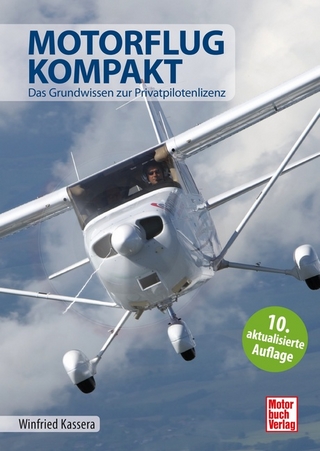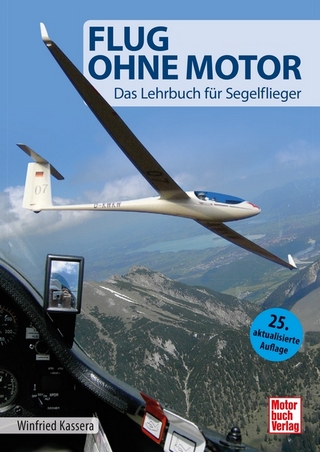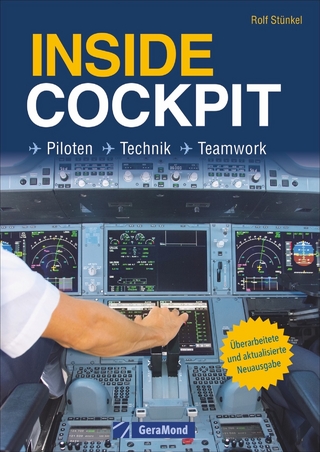
Spitfire
Amber Books Ltd (Verlag)
978-1-83886-324-1 (ISBN)
If asked to name a British aircraft of World War II, many people would pick the Spitfire. In production and frontline service throughout the war, this Supermarine design matured to become one of the greatest fighter aircraft of all time. By combining superb aerodynamics with one of the best aero-engines ever produced, R. J. Mitchell and his Supermarine team created a pure thoroughbred fighter which became a legend, especially during the Battle of Britain, the type’s baptism of fire. Much loved by its pilots, the Spitfire served as an interceptor, photo-reconnaissance, fighter-bomber and trainer, and it continued to serve in these roles until the 1950s. In total, there were 24 marks of Spitfire and many sub-variants.
Spitfire offers a compact illustrated guide to this most iconic of aircraft, with chapters divided by type and time period. Find out about the Mk VB, the most numerous and hardy model that served in every theatre of war, including flying with the Soviet Air Force on the Eastern Front; marvel at EN409, a Mk XI that achieved a speed record of 975km/h (606mph) in high-speed diving trials; learn about the Spitfire’s role in the Dieppe Raid in 1942, where the Mk Vs and Mk IXs flew over 2000 sorties in support of the landing; and discover well-known Spitfire pilots, included ‘Johnnie’ Johnson, who shot down 34 enemy aircraft and who flew the Spitfire right through his operational career from late 1940 to 1945.
Packed with 100 vivid artworks and photographs, Spitfire is a compact reference guide for lovers of classic aircraft and World War II aviation enthusiasts.
Edward Ward is a writer and illustrator who has written on a variety of aviation subjects for over ten years. As well as his books, he has produced many articles for aviation journals both in print and online and is a regular contributor to the Hush Kit aviation blog. Edward lives with his wife and daughter in Sydney, Australia.
Contents:
Introduction: Developing a Prototype
Development of the Type 224; the prototype Spitfire, K5054, first flew on 5 May 1936 from Eastleigh airfield near Southampton, improved Type 300 design; testing with the Aeroplane & Armament Experimental Establishment (A&AEE), 1936
Spitfire Mk I – Mk IV: the Battle of Britain
As the first of over 20 distinct fighter variants of this most famous of all combat aircraft, the Spitfire Mk I was the equal of any fighter in 1940. A lengthy process of evolution through combat experience saw the Spitfire mature, via the Mk II,
into a fighter of legendary abilities.
Spitfire Mk V – Mk VI: Overseas Service
Introduced as a stopgap between the Mk II and Mk III, the Spitfire Mk V became one of the most successful marks of Supermarine’s legendary fighter. It served in the UK and overseas as an interceptor and fighter-bomber. Includes Mk Va, Mk Vb; more Spitfire Mk Vs were built than any other type, with 6,487 built.
Feature: Two-seater model: T Mk VIII; plus 4 Squadron SAAF Mk VB in North Africa, where a second seat was fitted instead of the upper fuel tank in front of the cockpit
Spitfire Mk VII – Mk XVI: Campaigns in Western Europe
Despite its early success, the Spitfire Mk V proved no match for the Luftwaffe’s Fw 190 in combat. A solution was sought and arrived in the form of the very capable Mk VII and VIII, which proved highly successful in all its theatres of operation.
The Mk IX was the second most numerous type, with 5,656 being produced. It proved an effective counter to the appearance of the German Focke-Wulf Fw 190.
Spitfire Mk XII – Mk XIX: Griffon-engined variants
With the Rolls-Royce Merlin reaching the outer limits of its development potential, the Griffon – originating from a racing engine – was the logical choice to power the next generation of Spitfires. The first Mk XII flew in August 1942, and first flew operationally with 41 Squadron in April 1943. This mark could nudge 400 mph (640 km/h) and climb to an altitude of 33,000 ft (10,000 m) in under nine minutes.
Photo-reconnaissance models
Of all the Spitfire models, the least-known are the photo-reconnaissance variants. Yet it was these aircraft that were the most important Allied strategic reconnaissance machines of the European theatre and, together with the Mosquito, made up the bulk of the Allies’ camera-equipped assets.
PR.Mk IA, PR.Mk IB, PR.Mk IC, PR.Mk IE, PR.Mk IG, PR.Mk XIII, PR.Mk IX, PR.Mk XIX
Spitfires Mks 21–24: Postwar models
By the time its last production variant, the Mk 24, entered RAF service in 1948, the Spitfire bore little resemblance to the prototype that had first flown 12 years earlier, but was a considerably more capable machine.
Seafire
The Seafire, a name derived from sea, and Spitfire, was a naval version of the Spitfire specially adapted for operation from aircraft carriers.
In July 1943, the Seafire was used to provide air cover for the Allied invasion of Sicily; and reprised this role in September 1943 during the subsequent Allied invasion of Italy.
The Seafire continued to be used for some time after the end of the war. The FAA opted to promptly withdraw all of its Merlin-powered Seafires and replace them with Griffon-powered counterparts. The type saw further active combat use during the Korean War, in which FAA Seafires performed hundreds of missions in the ground attack and combat air patrol roles against North Korean forces during 1950.
| Erscheinungsdatum | 04.10.2023 |
|---|---|
| Reihe/Serie | Technical Guides |
| Zusatzinfo | Illustrationen |
| Verlagsort | London |
| Sprache | englisch |
| Maße | 176 x 222 mm |
| Gewicht | 515 g |
| Einbandart | gebunden |
| Themenwelt | Natur / Technik ► Fahrzeuge / Flugzeuge / Schiffe ► Luftfahrt / Raumfahrt |
| Natur / Technik ► Fahrzeuge / Flugzeuge / Schiffe ► Militärfahrzeuge / -flugzeuge / -schiffe | |
| Geschichte ► Allgemeine Geschichte ► 1918 bis 1945 | |
| Geschichte ► Teilgebiete der Geschichte ► Militärgeschichte | |
| Sozialwissenschaften ► Politik / Verwaltung | |
| ISBN-10 | 1-83886-324-9 / 1838863249 |
| ISBN-13 | 978-1-83886-324-1 / 9781838863241 |
| Zustand | Neuware |
| Haben Sie eine Frage zum Produkt? |
aus dem Bereich


